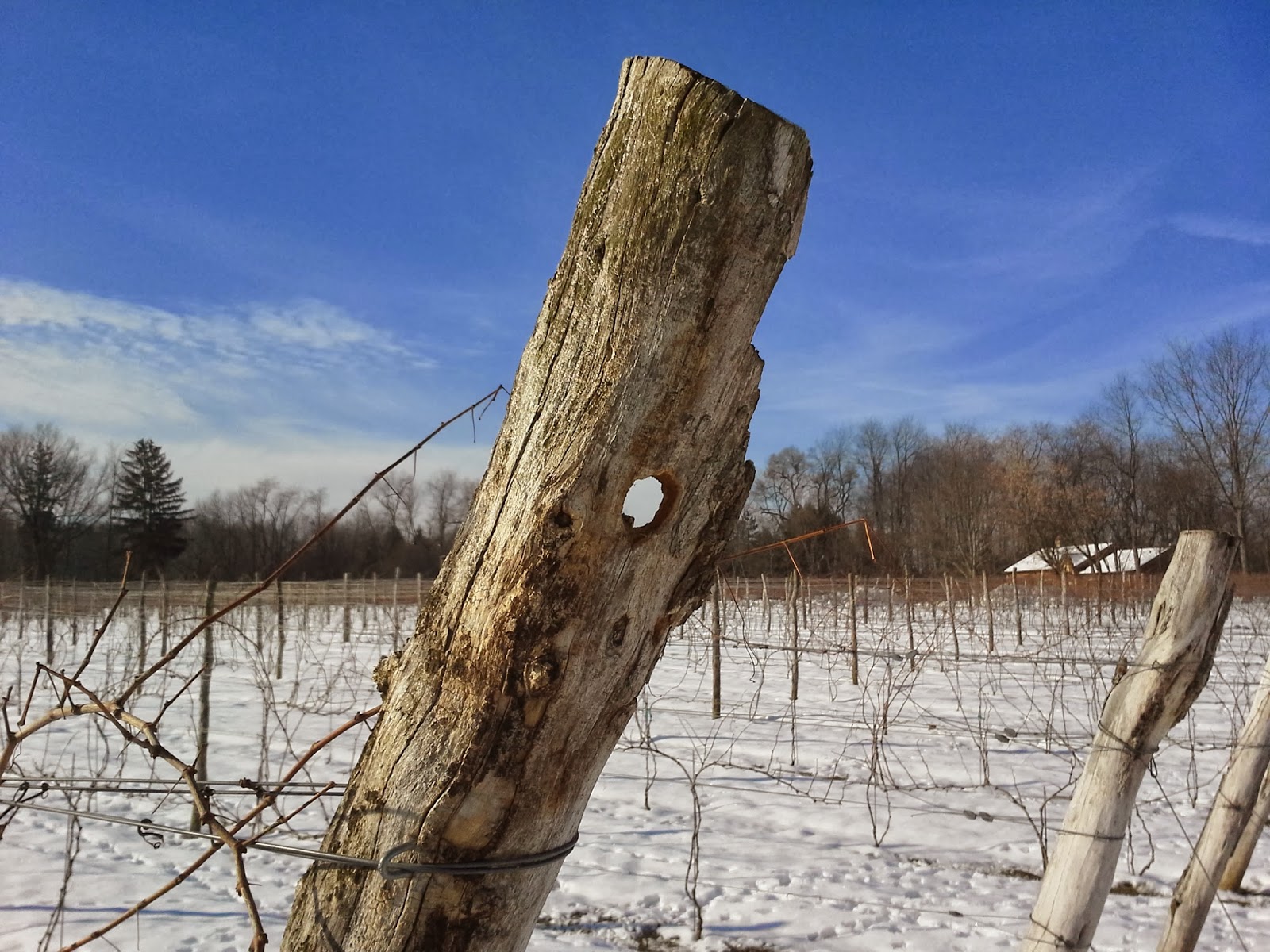Although
an ancient and widely celebrated holiday, the origins of St. Valentine’s Day as
a celebration of romance remain strangely murky.
And
yet, going back to some of Europe’s oldest folklore, this has always been a day
associated with, perhaps surprisingly, birds.
In
Geoffrey Chaucer’s ‘The Parliament of Fowls’ (circa 1381), birds gather at the
bower of “the noble goddess Nature” to settle love rivalries:
For this was on saint
Valentinës day
When every fowl cometh there to chose his mate.
When every fowl cometh there to chose his mate.
And so it went, through the
centuries, February 14th was deemed the day the birds select their
mates. (Which may work well in more temperate Europe, but particularly in a
winter such as this, mid February is rarely the finest day to go a-courtin’ in
our climate.)
Perhaps because vineyard work is
largely solitary work (and grapevines are not particularly chatty) those of us
who tend the vines often feel an affinity with the critters who share the
landscape with us, and Gervasi Vineyard's diverse fifty-five acres of vineyard,
woodland, fallow pasture, and wetlands support a particularly lively community of birds.
- Barn swallows and bluebirds nest in the holes in our natural locust trellis poles, helping to control the insect population and keeping our grapevines healthy.
- Chirpy killdeer build pebble nests on the open soil below the vines, depositing speckled eggs perfectly camouflaged amongst smooth glacial stones.
- Eagles and hawks swoop majestically above our old crop fields, while sharp-kneed Great Blue Heron fish patiently in deep pools along the meandering creek that transects this, the last working farm in Canton, Ohio.
Among all of these creatures,
however, it is clear that one pair rules the roost: Gina and Giuseppe, our
regal pair of white mute swans.
During winter months you might find
them bedded down on snow nests they build on ice patches on the lake.
If we ever get some warm days this winter, you will find Giuseppe diving down to the deepest muck of the lake, to begin daubing a leaf, mud, and willow branch throne for his lovely bride, Gina.
If we ever get some warm days this winter, you will find Giuseppe diving down to the deepest muck of the lake, to begin daubing a leaf, mud, and willow branch throne for his lovely bride, Gina.
It is during the summer months,
however, that Gina and Giuseppe are in their element. On certain crystalline
Tuscan afternoons, when the afternoon light is perfect, Gina and Giuseppe glide
in to view. They pirouette, dive and splash extravagantly, and, on occasion,
touch bills, elegant necks joined together as a heart, perfectly reflected in
still blue water.
Being mute swans, of course they
cannot speak, but we like to think this is their way of saying Benvenuto!
Because mute swans mate for life,
Giuseppe does not need to enact the ancient folkloric ritual of choosing a new mate each
February 14th.
But if you are strolling our grounds
this snowy Valentine’s Day, or any day of the year, and you happen to encounter
our regal pair touching bills to form a heart with their elegant necks, consider it
your personal welcome to Gervasi Vineyard, and the romanza of this place.




.jpg)

